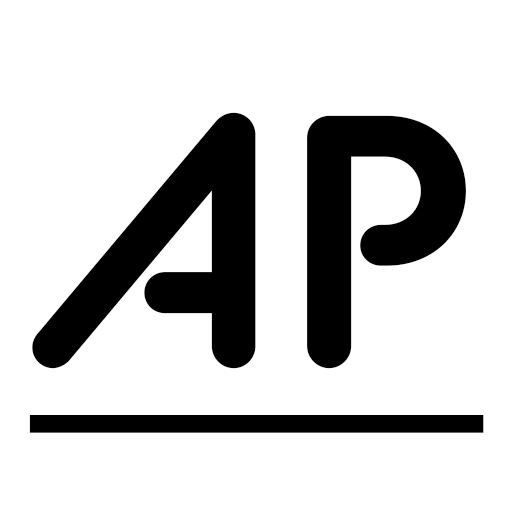Researchers gain clear picture of fault that threatens Pacific Northwest
A silent colossus lurks off the Pacific coast, threatening hundreds of miles of coastline with tsunamis and devastating earthquakes.
For decades, scientists have warned about the potential of the Cascadia Subduction Zone, a megathrust fault that runs offshore along the coast from northern Vancouver Island to Cape Mendocino, California. When the fault — or even a portion of it — next snaps, it will reshape life in Oregon, Washington and Northern California.
Of particular concern are signals of massive earthquakes in the region’s geologic history. Many researchers have chased clues of the last “big one”: an 8.7-magnitude earthquake in 1700. They’ve pieced together the event’s history using centuries-old records of tsunamis, Native American oral histories, physical evidence in ghost forests drowned by saltwater and limited maps of the fault.
But no one had mapped the fault structure comprehensively — until now. A study published Friday in the journal Science Advances describes data gathered during a 41-day research voyage in which a vessel trailed a miles-long cable along the fault to listen to the seafloor and piece together an image.
The team completed a detailed map of more than 550 miles of the subduction zone, down to the Oregon-California border.
Their work will give modelers a sharper view of the possible impacts of a megathrust earthquake there — the term for a quake that occurs in a subduction zone, where one tectonic plate is thrust under another. It will also provide planners a closer, localized look at risks to communities along the Pacific Northwest coast and could help redefine earthquake building standards.
“It’s like having coke-bottle glasses on and then you remove the glasses and you have the right prescription,” said Suzanne Carbotte, a lead author of the paper and a marine geophysicist and research professor at Columbia University’s Lamont-Doherty Earth Observatory. “We had a very fuzzy low-resolution view before.”
The scientists found that the subduction zone is much more complex than they previously understood: It is divided into four segments that the researchers believe could rupture independently of one another or together all at once. The segments have different types of rock and varying seismic characteristics — meaning some could be more dangerous than others.
Earthquake and tsunami modelers are beginning to assess how the new data affects earthquake scenarios for the Pacific Northwest.
Kelin Wang, a research scientist at the Geological Survey of Canada who was not involved in the study, said his team, which focuses on earthquake hazard and tsunami risk, is already using the data to inform projections.
“The accuracy and this resolution is truly unprecedented. And it’s an amazing data set,” said Wang, who is also an adjunct professor at the University of Victoria in British Columbia. “It just allows us to do a better job to assess the risk and have information for the building codes and zoning.”
Harold Tobin, a co-author of the paper and the director of the Pacific Northwest Seismic Network, said that although the data will help fine-tune projections, it doesn’t change a tough-to-swallow reality of living in the Pacific Northwest.
“We have the potential for earthquakes and tsunamis as large as the biggest ones we’ve experienced on the planet,” said Tobin, who is also a University of Washington professor. “Cascadia seems capable of generating a magnitude 9 or a little smaller or a little bigger.”
A quake that powerful could cause shaking that lasts about five minutes and generate tsunami waves up to 80 feet tall. It would damage well over half a million buildings, according to emergency planning documents.
Neither Oregon nor Washington is sufficiently prepared.
To map the subduction zone, researchers at sea performed active source seismic imaging, a technique that sends sound to the ocean floor and then processes the echoes that return. The method is often used for oil and gas exploration.
They towed a 9-plus-mile-long cable, called a streamer, behind the boat, which used 1,200 hydrophones to capture returning echoes.
“That gives us a picture of what the subsurface looks like,” Carbotte said.

Trained marine mammal observers alerted the crew to any sign of whales or other animals; the sound generated with this kind of technology can be disruptive and harm marine creatures. Carbotte said the new research makes it more clear that the entire Cascadia fault might not rupture at once.
“The next earthquake that happens at Cascadia could be rupturing just one of these segments or it could be rupturing the whole margin,” Carbotte said, adding that several individual segments are thought to be capable of producing at least magnitude-8 earthquakes.
Over the past century, scientists have only observed five magnitude-9.0 or higher earthquakes — all megathrust temblors like the one predicted for the Cascadia Subduction Zone.
Scientists pieced together an understanding of the last such Cascadia quake, in 1700, in part via Japanese records of an unusual orphan tsunami that was not preceded by shaking there.
“It requires an 8.7 to get a tsunami all the way to Japan,” Tobin said.
The people who recorded the incident in Japan couldn’t have known that the ground had shaken an ocean away, in the present-day United States.
Today, the Cascadia Subduction Zone remains eerily quiet. In other subduction zones, scientists often observe small earthquakes frequently, which makes the area easier to map, according to Carbotte. That’s not the case here.
Scientists have a handful of theories about why: Wang said the zone may be becoming quieter as the fault accumulates stress. And now, we’re probably nearing due.
“The recurrent interval for this subduction zone for big events is on the order of 500 years,” Wang said. “It’s hard to know exactly when it will happen, but certainly if you compare this to other subduction zones, it is quite late.”
You may be interested

Charles Barkley says he has ‘spoken to all 3 networks’ during TNT’s dispute with NBA over media rights bid
new admin - Jul 27, 2024[ad_1] The NBA rejected a bid from Warner Bros. Discovery (WBD) to exercise its right to match an offer from…

Celine Dion performs at Paris Olympics in first return to the stage since 2020
new admin - Jul 27, 2024Celine Dion made a triumphant return Friday with a very public performance: closing out the Paris Olympics' opening ceremony from…

2 Sinaloa cartel leaders, including son of “El Chapo,” arrested in Texas
new admin - Jul 27, 20242 Sinaloa cartel leaders, including son of "El Chapo," arrested in Texas - CBS News Watch CBS News Two leaders…


































